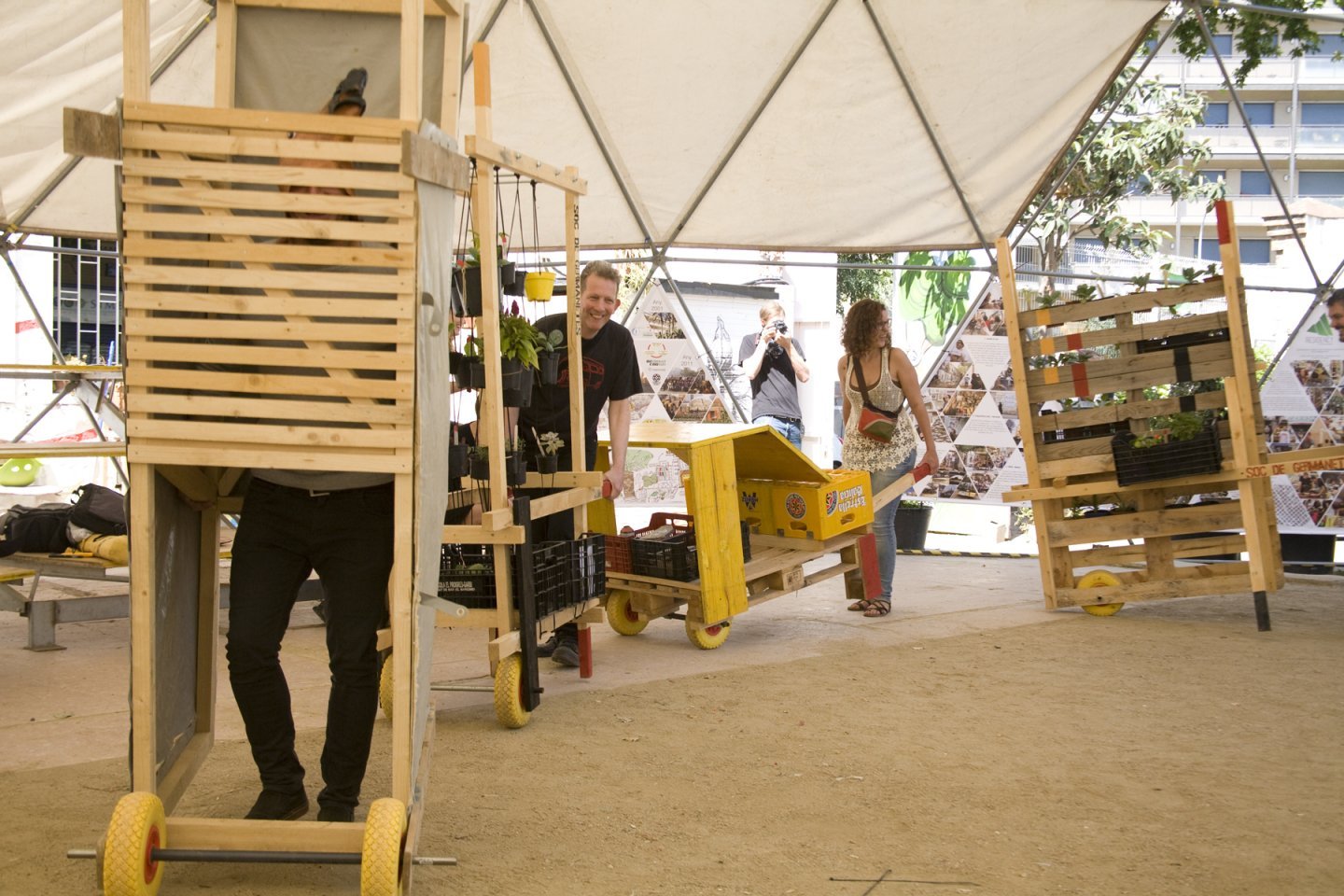
Learning for real
Working with partner universities in Barcelona and Warsaw proved to Janet Hetherington that practical training is key to a rich, collaborative learning environment.
Civic engagement is a term commonly associated with community and participatory arts, and yet formal training and supervision is rarely offered to people engaged in this area of work. However, in 2013 the University of Staffordshire and the Universities of Warsaw and Barcelona hatched a plan (courtesy of an EU Leonardo da Vinci lifelong learning grant) to find out whether artist residencies could play a role in training artists and communities delivering work associated with civic engagement. Our residency project served as action learning research to explore the experiences of everyone involved in such arts projects and to use this learning to create resources for others working in this sector.
Our project has reiterated the complexities of civic engagement and the rules and responsibilities placed on artists working in this field
Early into the project we noticed that the experiences of participants, project managers, and even funders, were rarely considered or documented in the form of training or learning materials to support artists. We set out to consider whether an alternative form of training and practice could be delivered, within which the status and contribution of all stakeholder partners were acknowledged.
The three residencies were as follows:
- In Warsaw a local partnership worked with the UK-based Plattformer collective in residential communities to challenge stereotypical views relating to neighbourhoods.
- Two artists from Poland resided in Espai Germanetes, a plot located in the Eixample district in Barcelona which is temporarily managed by Recreant Cruilles, as part of a campaign to engage local citizens to influence decision-making about public spaces.
- Two care homes in Staffordshire hosted a Spanish artist and explored ways to change perceptions of care settings.
The usual wonderful community arts stuff happened. Seed bombs were thrown at diggers threatening to occupy land. Story and barter exchanges took place in disused residential yards. Photographs and audio stories were taken of people whose stories were seldom heard. Transition stations were built to harvest stories and conjure possibilities for new projects. Mobile gardens toured communities and a Trojan horse performance energised communities fighting for change.
However, it was during the action research sets where we began to hear some alternative narratives to the project – the experiences of the communities, workers, artists and participants. We also understood who might want training and education – and that the students were not who we necessarily expected them to be. The cleaners, activists, local politicians, businesses, artists, health professionals and publicists all wanted to be part of a learning community.
We also found that artists and arts organisations are often unaware of the amount of effort and confidence it takes for host organisations and communities to agree to participate in creative civic engagement projects. We were familiar with the stories of artists working beyond their allocated hours (and in the course of the project we did try to explore ways to manage this), but we found that the host organisations and community members were also working and volunteering above and beyond the time we had allocated for the work.
Being scrutinised by a European partner also helped each team to consider their civic structures from a new perspective, as they strived to explain their civic status to artists and study teams from each country. It is worth noting that many artists and cultural practitioners had different views about how they would define civic engagement. The experience the artists had in a residency context enabled them to think about the rationale behind civic structures and learn about issues of oppression and inclusion by dealing with a real-life scenario, something that would have been difficult to articulate in a classroom.
Overall, our project has reiterated the complexities of civic engagement and the rules and responsibilities placed on artists working in this field. Understanding where power boundaries lie and the motivations of oppressors and historical influences are only the tip of the iceberg of what those working with civic engagement issues need to know. By designing learning to take into account the practicalities of delivering such work, and by listening to the disaster stories as well as the successes, we started to appreciate the richness of the collaborative learning environment which emerged, regardless of whether it is undertaken for educational purposes or not.
We are still learning about how a residency can be delivered, but we believe it offers an innovative way to support people, especially community and participatory artists who value CPD but face challenges to find the time, finances and the appropriate training to help them in their work. We have started to compile a toolkit documenting the learning and the resources from the project.
Janet Hetherington is Senior Lecturer in Civic Engagement at Staffordshire University.
www.staffs.ac.uk
Join the Discussion
You must be logged in to post a comment.